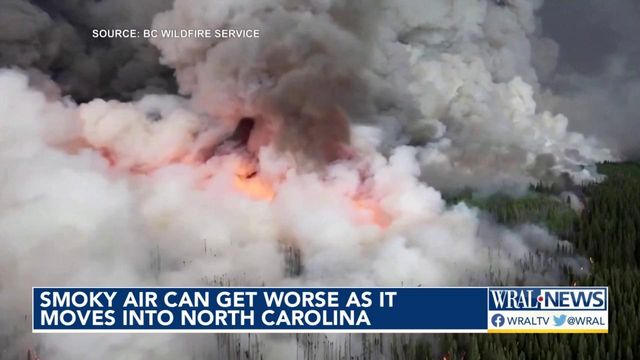Nonprofit calls on EPA to set stronger air quality standards to protect public health
Since smoke from Canadian wildfires has caused air quality alerts throughout North Carolina and the country in recent weeks, you might wonder: What’s exactly in the haze we see and breathe?
All the air quality color codes are part of something called the air quality index – a reflection of how much of those tiny, dirty particles – called particulate matter – are in the air.
However, University of North Carolina at Chapel Hill environmental science professor William Vizuete said the air quality index is missing a key element that could help us understand just how dangerous these tiny particles are.
“In order for us to understand the properties of that particulate matter, how unhealthy it is for us and how it affects the climate, we have to understand the amount, its size, but also its composition,” Vizuete said.
As a particulate matter from the Canadian wildfires moves, it interacts with other gases. As the matter moves to North Carolina, it absorbs more gases and continues to transfer. By the time the smoke particulate matter gets to North Carolina, it changes. Potentially, it becomes even worse for our health than we know.
“There’s evidence that seems to suggest that there’s something that changes when you change the composition,” Vizuete said.
Vizuete said it could worsen too.
The nonprofit Moms Clean Air Force is calling on the U.S. Environmental Protection Agency to set stronger air quality standards that take into effect how particulate matter is affected by other pollutants it interacts with as it moves.
“For communities that are living in areas where there’s already high levels of air pollution, this added burden of wildfire smoke really exacerbates the burden that they’re living with every day,” said Moms Clean Air Force senior policy analyst Elizabeth Bechard.
Vizuete says while the current air quality standards are helpful, until we know how those fine air particles like wildfire smoke transform with other pollution, we don’t really know how bad those “code red” days are for our health.
In January, the EPA proposed a few changes to its air quality standards. However, the proposed changes do not address the issue of how the particles transform. The EPA is still finalizing its proposed changes.
“EPA’s proposal will specifically take comment on strengthening the primary (health-based) annual PM2.5 standard from a level of 12 micrograms per cubic meter to a level between 9 and 10 micrograms per cubic meter, reflecting the latest health data and scientific evidence,” an EPA news release states.
The EPA said it is currently reviewing feedback from nearly 700,000 public comments as it prepares a final rule on the updated standards.












